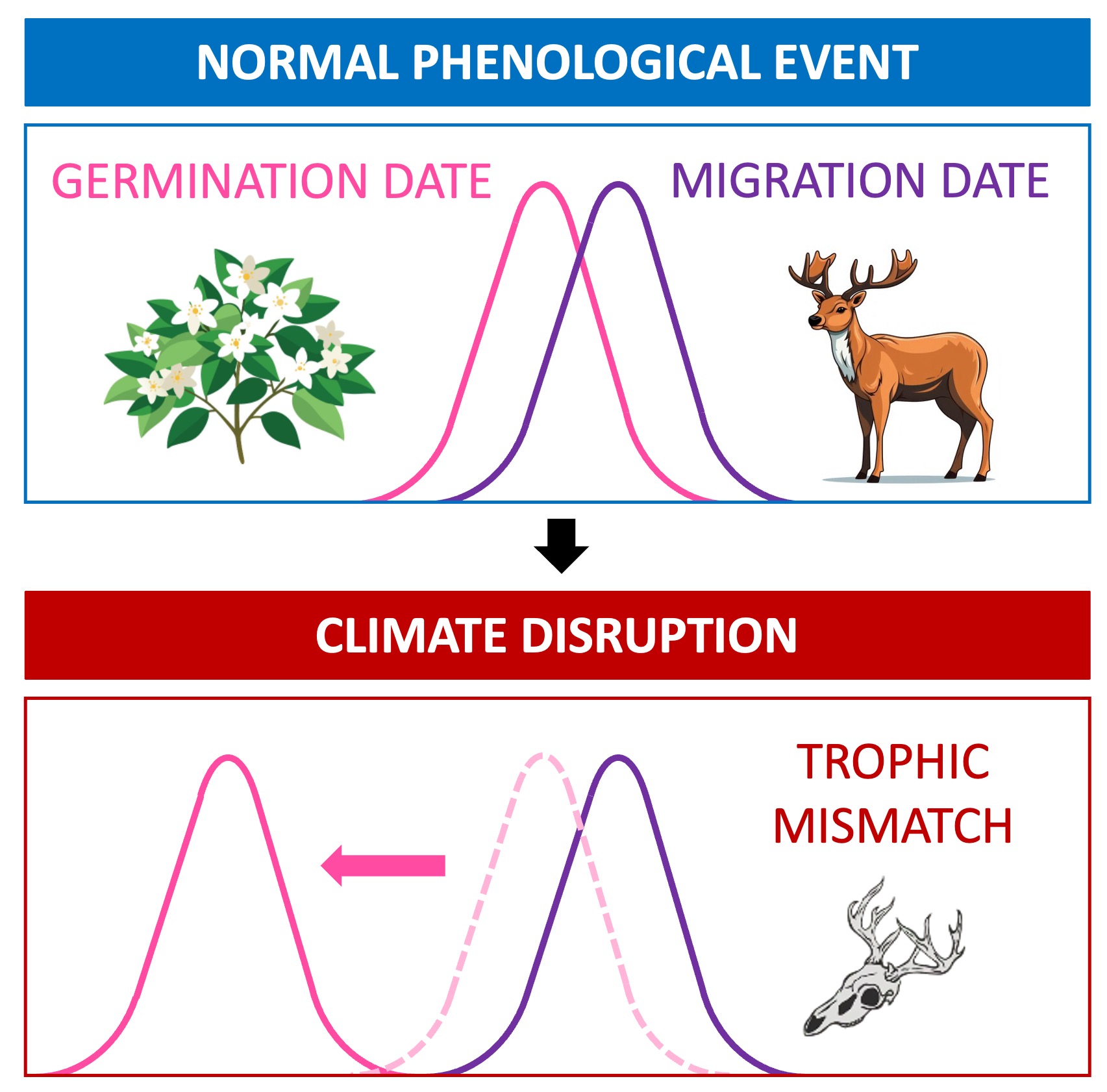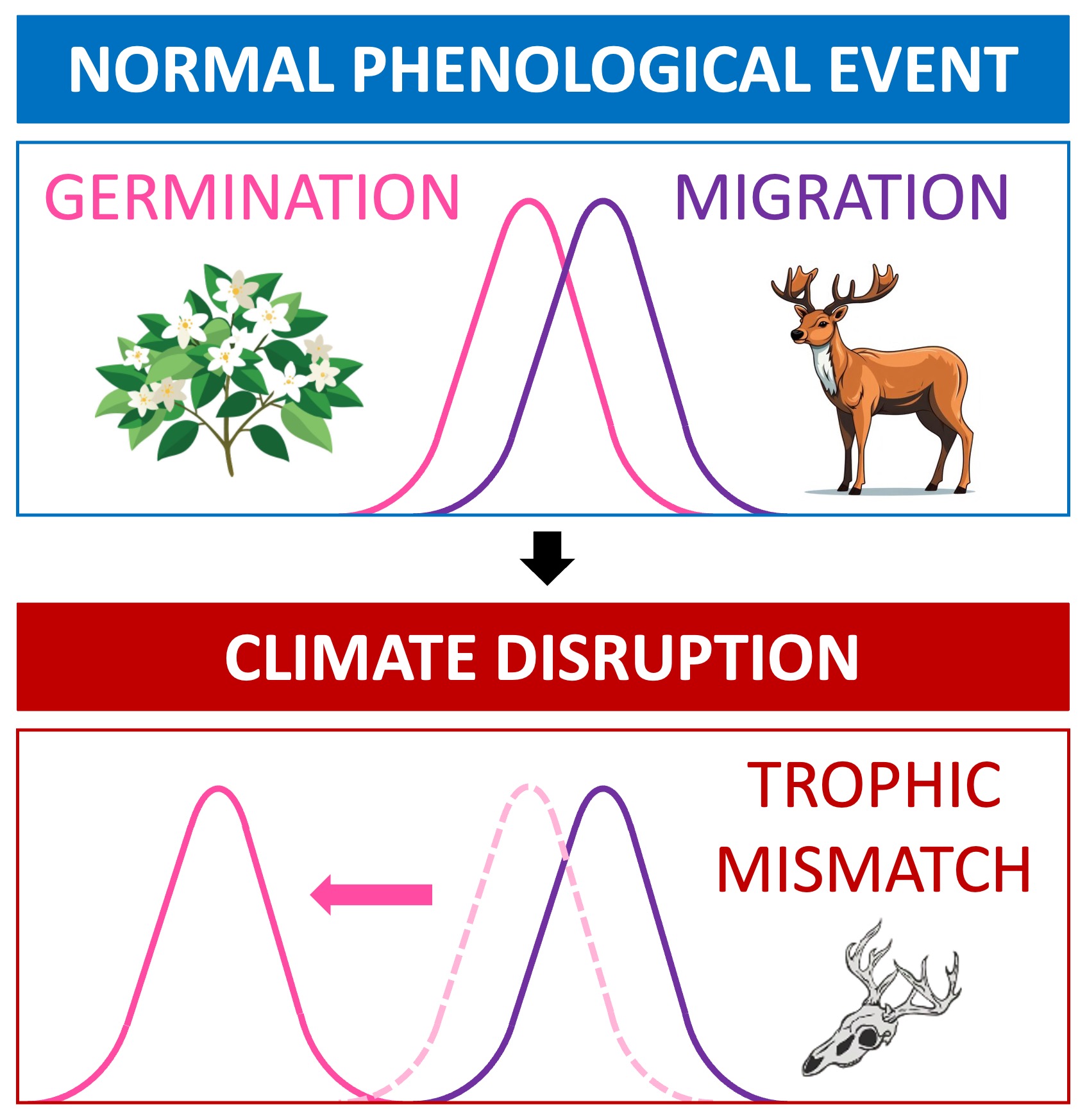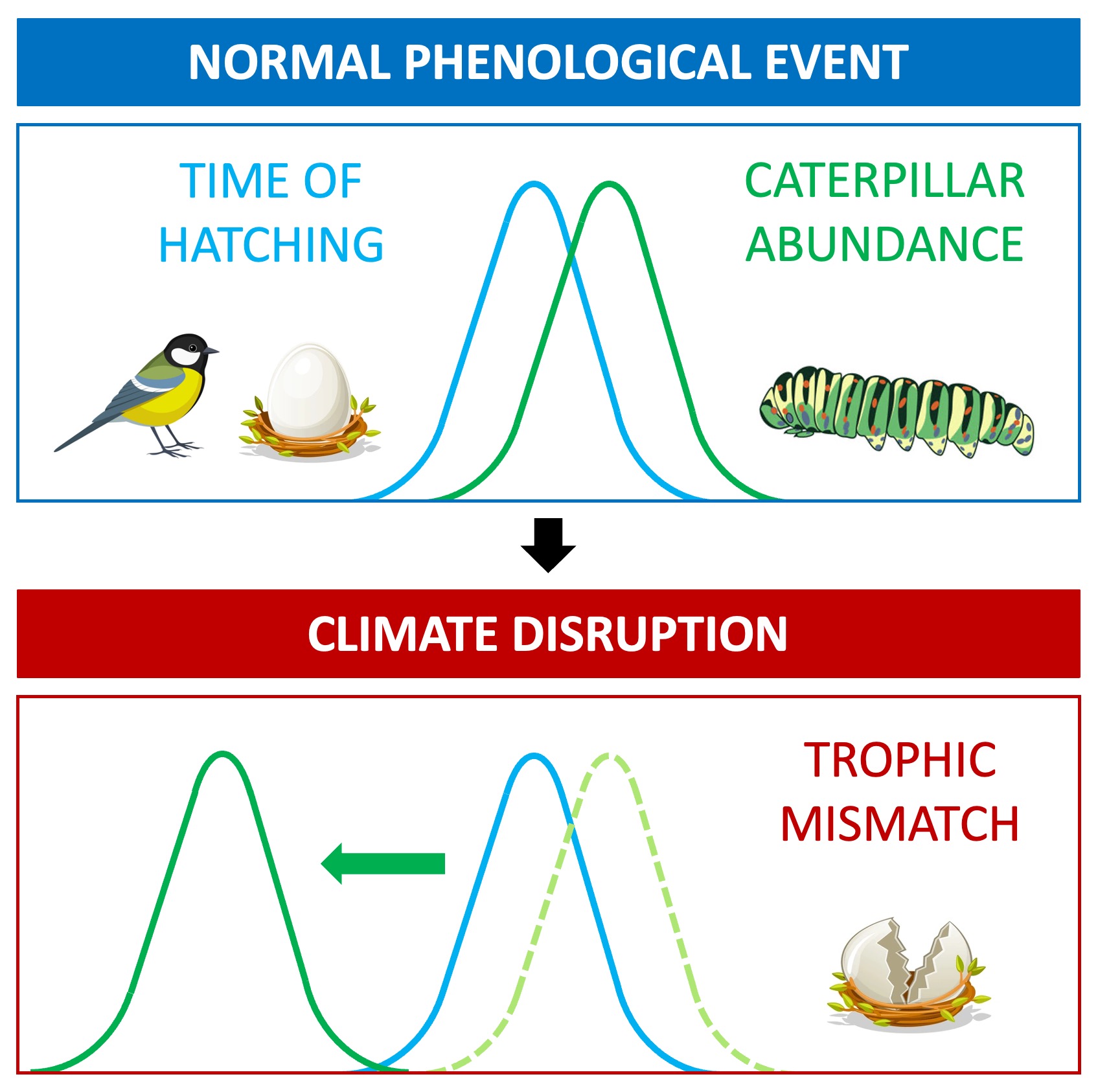

Climate Disruptions
Changes in climate can disrupt the synchrony of phenological events by altering the environmental cues that trigger the events
-
Two of the main environmental cues are temperature and the length of sunlight during a day (photoperiod)
Arctic Mouse-Ear and Reindeer
-
Reindeer are migratory animals that rely on day length as the environmental cue for their seasonal movement
-
The Arctic mouse-ear chickweed is a plant that forms part of the diet of the reindeer and its germination pattern is regulated by temperature (typically spring growth)
-
Climate change (due to human activity) is resulting in higher global temperatures but does not affect the daylength
-
This is creating a temporal mismatch between the reindeers normal migratory timing and the availability of their food source
Great Tits and Caterpillars
-
Great tits are a small bird that rely on caterpillars as a food source for their hatchlings
-
While both the timing of egg hatching and caterpillar activity is controlled by temperature cues, the caterpillars are more susceptible to temperature changes
-
Climate change is causing the timing of peak caterpillar activity to occur prematurely, reducing the rates of survival among the hatchlings
Climate Disruptions


Arctic Mouse-Ear and Reindeer

Great Tits and Caterpillars
Spruce Bark Beetle
-
Spruce bark beetles are insects that lay their eggs within the bark of spruce trees in Europe and North America
-
The larvae will feed on the tree phloem and other tissues while they mature, which causes damage to the plant
-
The life cycle of the beetle is regulated by temperature – climate change is increasing the number of life cycles per year
-
The increase in beetle population within the spruce trees is causing higher amounts of damage and increasing the rate of tree death




